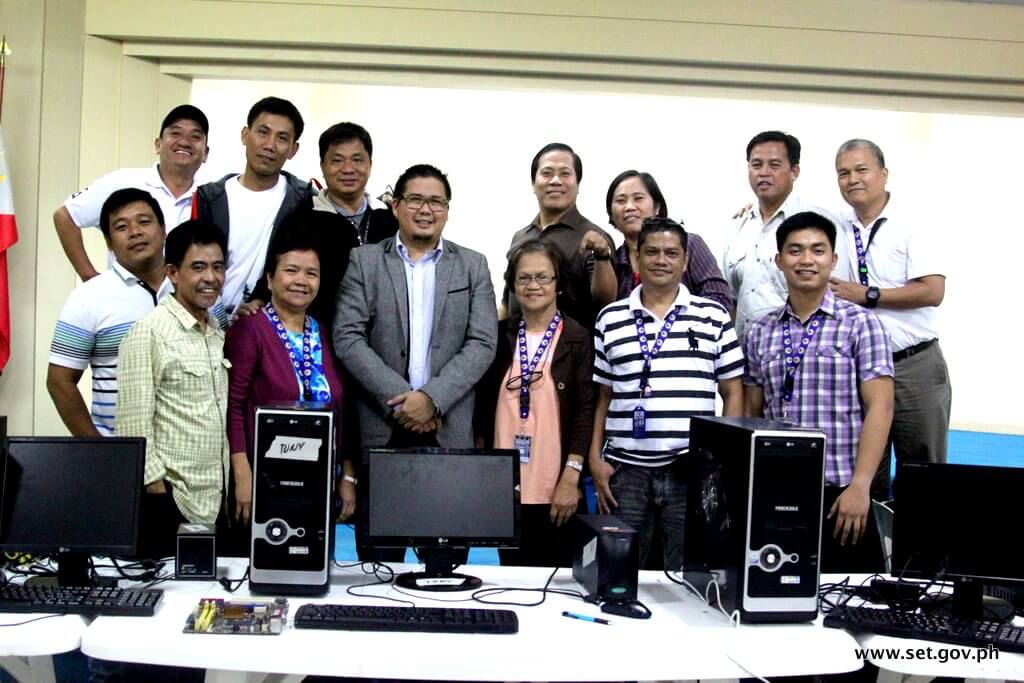
It is amazing what one can accomplish with hands-on training. It cuts across many boundaries. Age, sex, and even resistance to new things – neophobia, are virtually eliminated with highly tactile and participatory training exercises. Over 200 hundred years ago, Benjamin Franklin, the famous polymath and one of the Founding Fathers of the United States of America, expressed this in three sentences: “Tell me and I forget. Teach me and I remember. Involve me and I learn.” Fast forward to this century, Dr. Kelly Lambert, a leading neuroscientist at the psychology department at Randolph-Macon College, firmly stated that, “When you do meaningful work with your hands, a kind of neurochemical feedback floods your brain with dopamine and serotonin.” These two chemicals induce the brain to feel pleasure and elation. Thus, when a seemingly boring activity is broken down and redesigned into something physical, the stodgy becomes exciting. The monotonous becomes interesting. When work becomes play, instruction is most absorbed.
With this in mind, on January 26-27, 2015, the Senate Electoral Tribunal’s Information Systems and Judicial Records Management Service (ICSJRMS) conducted a basic computer competency training for the different service groups in the Tribunal.
At an average of 51 years of age, all fourteen participants emanated a quiet antipathy to the activity. “We are too old for computers,” some said, hoping to provoke a reaction. The message was quite clear. They had no need for it.]
That quickly changed as the activities commenced. The first one-and-a-half-hour was devoted to computer history. But as opposed to straight-up lecture where names, dates, and places are neatly stacked one on top of the other without context, the method by which the lesson was conveyed was more attuned to the Socratic method where questions fly at random. The lucky participant whom fortune favored had no choice but to answer. With this method, ennui was kept at bay as the lecture breezed through the Industrial Revolution to the present age. After all, who would dare fall asleep whilst walking on broken glass?
In the next segment, participants were asked to identify the parts of the computer. As might be expected, most of them recognized the CPU, mouse, and keyboard but not their use. To rectify this, Mr. Joseph Madulid reduced the computer into human terms. The participants were directed to consider the eyes as cameras, mouths as speakers, ears as microphones, brains as CPUs, and so forth. From this he imparted that there are three primary parts in a computer – input, process, and output.
Thereafter, Mr. Madulid instructed the participants on the proper way to set-up a computer system. He demonstrated how to marry the various plugs and cables to their respective sockets. Ms. Rosario M. Perez repeated the process and stressed the proper way of turning on and shutting down of the computer. She then instructed one of the participants to disassemble the computer. Mr. Benjamin R. Manalastas continued the lesson by breaking down a computer into its basic components. He pointed out the various internal components. Of course, this was still presented in human terms. More examples were given to reinforce the lesson. And at the end of the demonstration, each participant was asked to touch and manipulate the components.
To enhance their knowledge even further, Mr. Manalastas taught the participants how to diagnose computer problems. Thus, certain sounds, vibrations, and display prompt errors were described and demonstrated.
To conclude the computer anatomy lesson, all participants were asked to go back to their respective seats and assemble and disassemble the computers assigned them. Although varying in speed, all of them succeeded in the task. They were asked to repeat the assembly/disassembly process four times. Noticeably, at each repetition their speed increased.
At this juncture, the participants, who were a mix of drivers, carpenters, and mid-level managers, were already equipped to attend to mundane computer issues both at the workplace and at home. “Ganito lang pala ito,” one said, obviously proud of herself. “Hindi na kami maloloko ng mga [computer]
technicians dahil alam na namin. Makakatulong na din kami sa opisina mag-ayos ng kompyuter,” she added. At this point, they were already empowered.
To the amazement of all, Ms. Lourdes A. Nicolas, the ICSJRMS’ most seasoned team member, stood up and conducted the training on keyboard and mouse operation. She instructed everyone on the proper way to position the hands when using the mouse and keyboard. Each participant was asked to try to click icons on their screens and type words with their computers.
Visibly, eight participants were ready to give up. They reverted to their old mantras – too old, too difficult. Impossible. To resolve this, the ICSJRMS team decided to turn the task into something enjoyable. Thus, video games were introduced. All participants were given 30 minutes to play “Shark Attack” a game where players are tasked to use the mouse to direct fish away from predators and eat smaller fish. In no time, all participants showed marked improvements in their “fish-eating” skills!
The next 30 minutes were allotted to “Typing Shark” a game where players are tasked to type words written on the bodies of sharks posed to eat a diver. Only the right words will kill the sharks. After a few trials, almost all participants showed marked improvement on typing with the computer.
With Ms. Nicolas still at the helm, the last hour was dedicated to word processing. The participants were instructed in LibreOffice and MS Word basic operation. They were then tasked to write and format a few lines of text on screen. Finally, the participants were instructed on how to save their files to their computers and USB devices. As a fitting conclusion to the training, they were directd to turn-off and dismantle their computers.
At the concluding moments of the activity, there was a marked change in the attitudes of the participants. They seem more confident – empowered. They seemed more happy. If these observations are valid, then it must be true what the 19th century polymath Carl Friedrich Gauss meant when he said, “It is not knowledge, but the act of learning, not possession but the act of getting there, which grants the greatest enjoyment.”
Facilitators:
|
Participants:
|





